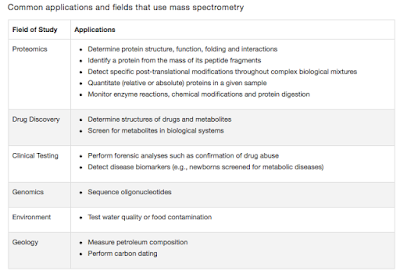NGS for Microbial Diagnostics
Greetings
I have multiple times talked about current lacunae in culture based identification of bacteria from clinical samples. As much as is the problem of time involved in classical methods, there is equally a problem in finding the culprit. In an ideal scenario, Microbial diagnostics should be able to catch up the etiological agent by growing them on a media and then subsequently identifying them. In reality, most of the labs are far from ideal. Studies indicate that often microbial identification is missed because there is too much reliance on culture.
Long ago I had written a post for why bacterial growth in culture is not as simple as it seems to be (Link). Common media used in the laboratory include Blood agar, MacConkey agar, Nutrient agar, CLED agar etc. Most of these support growth for a limited number of organisms. Let us take an example. Neisseria meningitidis is a well known bacteria involved with meningitis. The growth of this organism has very specific requirements. Unless a clinical suspicion has been raised, specialised media mayn't be used. Occassionally despite extensive workup finding a pathogen may turn out to be difficult.
One of the best example that I recall is a case published in NEJM. The case is that of a 14 year old boy. The diagnostic workup of the case was not yielding. A brain biopsy also didnt reveal anything significant. When the sample was tested by whole genome sequencing Leptospira infection was suspected based on finding 0.016% corresponding read. Later, further molecular work confirmed that the patient had Leptospira santarosai infection. Similar studies have been done earlier. Studies have tried to examine if they could find evidence for infection using 16s rRNA PCR and sequencing in clinical samples. The studies indicate microbiologists are missing a significant lot of cases. It is my understanding from the reports that the microbial identification rate is anywhere between 18 to 40% depending on the techniques used for identification.
In a recent pilot study paper from Johns Hopkins, showed that using Next Generation sequencing technologies and rigourous bioinformatics, organisms can be identified from clinical samples of brain infection. Pardo-Villamizar says, "By incorporating modern genetic sequencing techniques into pathology diagnostics, we were able to investigate the potential presence of infection in 10 subjects and found appropriate explanations of clinical problems in eight out of 10 patient cases examined in this study. We hope to develop this technique further as a way to bring the diagnosis rate of inflammatory brain disorders and infections closer to 100 percent so we can treat patients more effectively." The study first appeared in bioRxiv.
 |
| Fig 1: Microbial identification from study. Source |
In the study, the number of bacterial and viral reads varied highly (20 to 25,000). By comparing the sequences to databases identification was possible for infectious agent in 3 out of 10 patients. A summary of findings is shown in Fig 1.
Of the cases as mentioned, 3 were highly significant. Pt-8 was from a 67-year-old woman with osteomyelitis and lung disease presented with multifocal brain and spinal lesions. The sequencing from samle yielded 15 reads. When the data was compared only against M tuberculosis genome, 34 reads could be randomly assigned to TB. Patient responded well to anti-TB drugs. Pt-5 was diagnosed of JCV and Pt-10 of EBV. In other cases it was not absolutely ascertainable as to if the detection was clinically relevant or not.
The study also mentioned that they could identify many different microbial reads which can complicate the findings. For example, Propionibacterium acnes was detected in all samples, indicating microbial spillover from the intervening tissues probably from collection procedure. The authors also acknowledge that such methods are limited by available database and their completeness. As Steven Salzberg comments, "One of the limitations of using this kind of diagnostic tool is that we can only identify the pathogens for which we have the genetic sequences available. As we continue to sequence the genomes of more organisms, the tool will become steadily more powerful."
Of course this is not the first study to look at NGS as a method for Microbial diagnostics. But this study comprehensively captures the data of prospectives that we expect in future. I also understand that the scenario is quite easy when it comes to samples such as blood or CNS samples where the microbial identification is easier. But what about samples such as Urine or skin. Sequencing will complicate the data and it would be a lot harder to understand which sequence is relevant since they have a natural microbial load.
Wilson M, Naccache S, Samayoa E, Biagtan M, Bashir H, Yu G et al. Actionable Diagnosis of Neuroleptospirosis by Next-Generation Sequencing. New England Journal of Medicine. 2014;370(25):2408-2417. DOI: 10.1056/NEJMoa1401268
Köser C, Ellington M, Cartwright E, Gillespie S, Brown N, Farrington M et al. Routine Use of Microbial Whole Genome Sequencing in Diagnostic and Public Health Microbiology. PLoS Pathogens. 2012;8(8):e1002824. http://dx.doi.org/10.1371/journal.ppat.1002824
Salzberg S, Breitwieser F, Kumar A, Hao H, Burger P, Rodriguez F et al. Next-generation sequencing in neuropathologic diagnosis of infections of the nervous system. Neurology - Neuroimmunology Neuroinflammation. 2016;3(4):e251. doi: http://dx.doi.org/10.1212/NXI.0000000000000251





Comments
Post a Comment